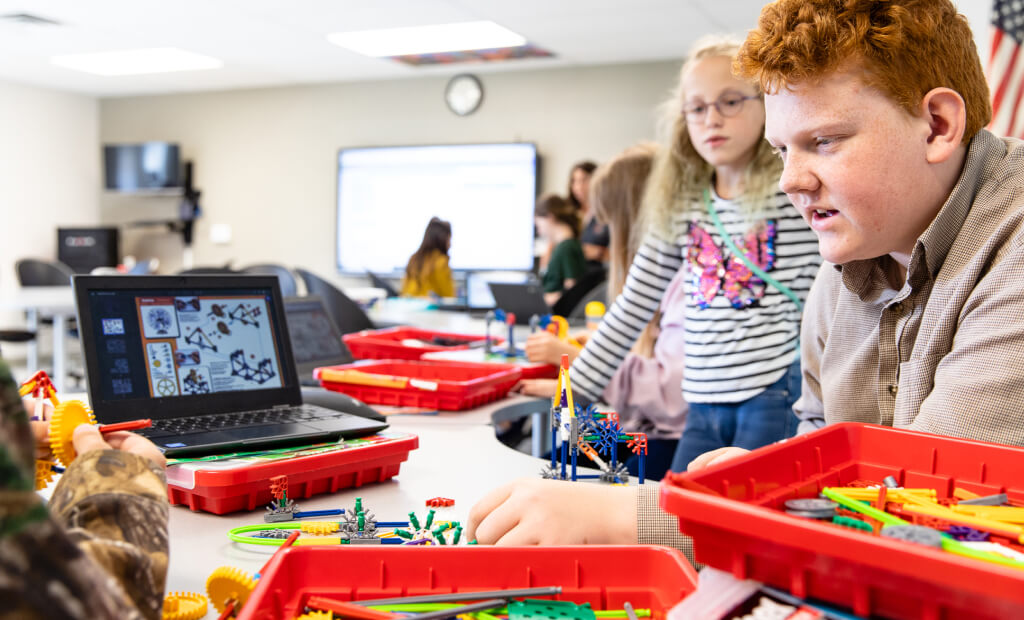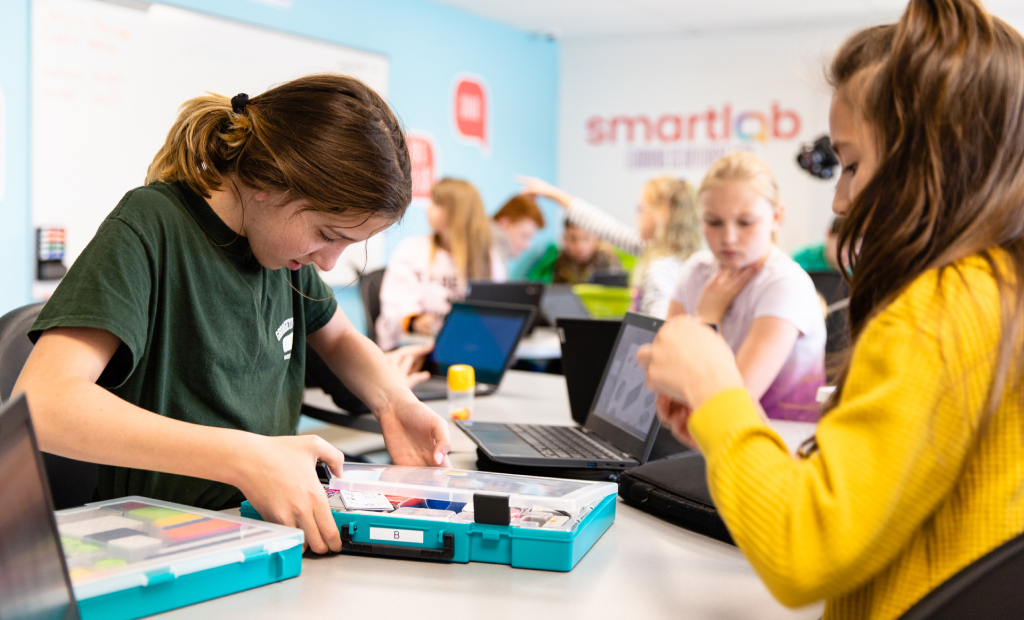What Is a STEM Lab? A Guide to the Classroom of the Future
Schools, educational organizations, and government programs continue to promote the importance of a science, technology, engineering, and mathematics (STEM) education. And for good reason: As advances in digital technology continue to redefine all aspects of our lives, STEM education is increasingly seen as essential for helping learners develop 21st-century skills.
However, you can’t just will a STEM program into existence. There has to be an intentionality about the design of a STEM program, as well as the spaces that support learning — in this case, a STEM lab. But what, exactly, constitutes a STEM lab and distinguishes it from something like a makerspace?
This article aims to demystify the concept of a STEM lab, to help you understand what goes into its design, and how it functions as a collaborative space for hands-on learning. By exploring these elements, we hope you’ll have a better idea of how to establish a future STEM lab in your institution.
What is STEM?
We define STEM as an interdisciplinary approach to the instruction of science, technology, engineering, and math. In STEM, educators try to leverage the connections between these subjects to incorporate some — or all — of them into every lesson or project, instead of covering each one separately.
There is also an approach that incorporates the arts to the mix, referred to as STEAM, which can include content ranging from fine art and performance art to photography and English literature. And there are other STREAM approaches that can incorporate either reading or religious education.
Regardless of the acronym you choose to use, it’s the integrated, pedagogical approach combined with a focus on these skill areas that truly defines STEM. It is an intentional instructional approach meant to help learners compete in the modern job market and better prepare them for what they’ll experience as citizens in the 21st-century.
How do we design learning spaces to support STEM programs?
Just as STEM’s learning content should be intentional, so should the design of the learning space. If we want learners to be engaged and empowered, then we need to ensure the learning experience is experiential, personalized, and collaborative. For example, when we design a space for STEM learning, we draw upon five guiding principles:
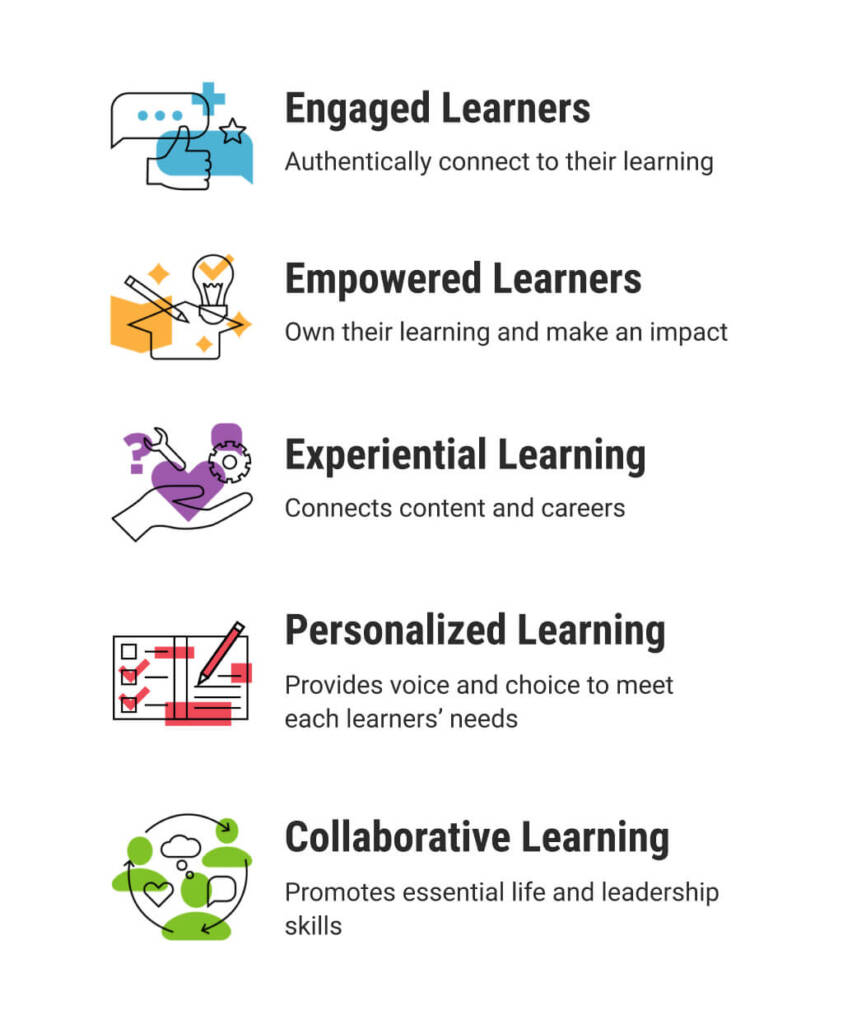
- Students should be able to authentically engage with the curriculum and be excited to complete projects.
- Students should be empowered to own their learning and to take their work beyond the classroom.
- Core STEM concepts and complex concepts should connect to real-world activities.
- Individual needs should be met through personalized learning.
- Students should be encouraged to collaborate.
The learning environment should be a space that accounts for all of these elements — from the curriculum, to the available resources, to the layout of the environment itself — in an intentional way that promotes creativity, engagement, and critical thinking. When these learning spaces tie directly to STEM principles, that’s when we can consider it a STEM lab.
What is a STEM lab?
STEM labs are educational spaces specifically designed to support STEM programs. An effective STEM lab should fulfill the priorities established in the National Science Foundation’s STEM Education for the Future report:
“We must ensure that the appropriate technological innovations make it into learning spaces, whether face-to-face classrooms or not, guided by educators who understand how modern technology can affect learning, and how to use technology to enhance context and enrich learning experiences for students.”
But how can we ensure that a STEM lab can effectively teach concepts, and not simply be a room with STEM materials? When we construct a STEM lab space, we make sure to consider five important components: the environment, equipment, curriculum, professional development support, and how to make everything sustainable.
- STEM Environment — The best STEM labs should be wholly integrated learning environments where everything — from the technology and furniture to curriculum and assessment — is intentionally chosen and carefully integrated. When designing the environment, you should constantly be asking how each element will support learner collaboration, experiential learning, and engagement. Other concerns about the space should include:
- Is the space designed around supporting student-centered learning?
- Is the space customizable and easy to upgrade?
- Does the space meet Americans with Disabilities Act (ADA) compliance requirements?
- STEM Equipment — You should consider how the equipment, technology, and tools will support an interdisciplinary approach and help students develop skills appropriate for both their grade and abilities. Purposely select equipment to provide access to real, pre-professional tools, but also to match the learner readiness. Equipment can include a range of digital technology and practical tools, from physical construction and modeling materials to coding and data analysis software.
- STEM Curriculum — The STEM curriculum used within the lab should have specific learning goals that align with age-appropriate standards. The curriculum of most STEM labs will center on active learning and problem-solving, as STEM practices tend to be grounded in a constructivist approach to learning. The constructivist idea that learning is more lasting and useful when students construct knowledge through exploration ties directly into the scientific approach intrinsic to STEM fields.
- STEM Instructor Professional Development — STEM instructors need support to develop their own skills, including how to better facilitate learning within the STEM lab vs. just “delivering knowledge” in a classroom. Also, as tech changes, so too will the curriculum, which means instructors will need ongoing support to stay informed on best practices. To succeed, professional development needs to be embedded directly in instructors’ jobs and sustained over time, both to ensure that skills are learned within the context of their role and to enhance student outcomes.
- Sustainability for the STEM Program — Once your school has started a STEM program, how can you keep both it and the lab ongoing and on-track? You’ll need to answer questions around how to maintain, update, and upgrade the environment, equipment, and curriculum. Your school will also need to establish a training plan for instructor professional development, especially for situations when a STEM instructor moves on.
A STEM lab has to support a STEM program, and vice versa. STEM programs without dedicated and well-designed labs aren’t able to provide learners with the tools and environment necessary for success. A STEM lab without a program to guide it is just a makerspace — or worse — may be relegated to a storage room for unused equipment.
STEM lab design guidelines
There’s a lot that can go into a STEM lab design, so here are some helpful guidelines.
1. Start with the end in mind — Just as we reference our guiding principles when designing a space, you want to determine your desired outcomes and utilize them as a roadmap. Questions you should ask yourself include:
- What learning outcomes do you hope to achieve with the STEM lab?
- How would you like to see learners utilize the space?
- How will the STEM lab look within the school — who has access and when?
2. Address each of the five design components — We reviewed the five components of environment, equipment, curriculum, professional development, and sustainability — but what do they look like in practice within a STEM lab?
For our SmartLabs, we follow a set of established guidelines to address each of the key components:
- The learning environment is customized and tailored for class size, technology needs, and layout.
- All projects and equipment are designed around hands-on learning and problem-solving.
- The curriculum and digital support tools align with national academic standards such as the CCSS and NGSS.
- We support professional development through on-site training, digital courses, and coaching.
- We support sustainability through professional development, tech support, and curriculum updates.
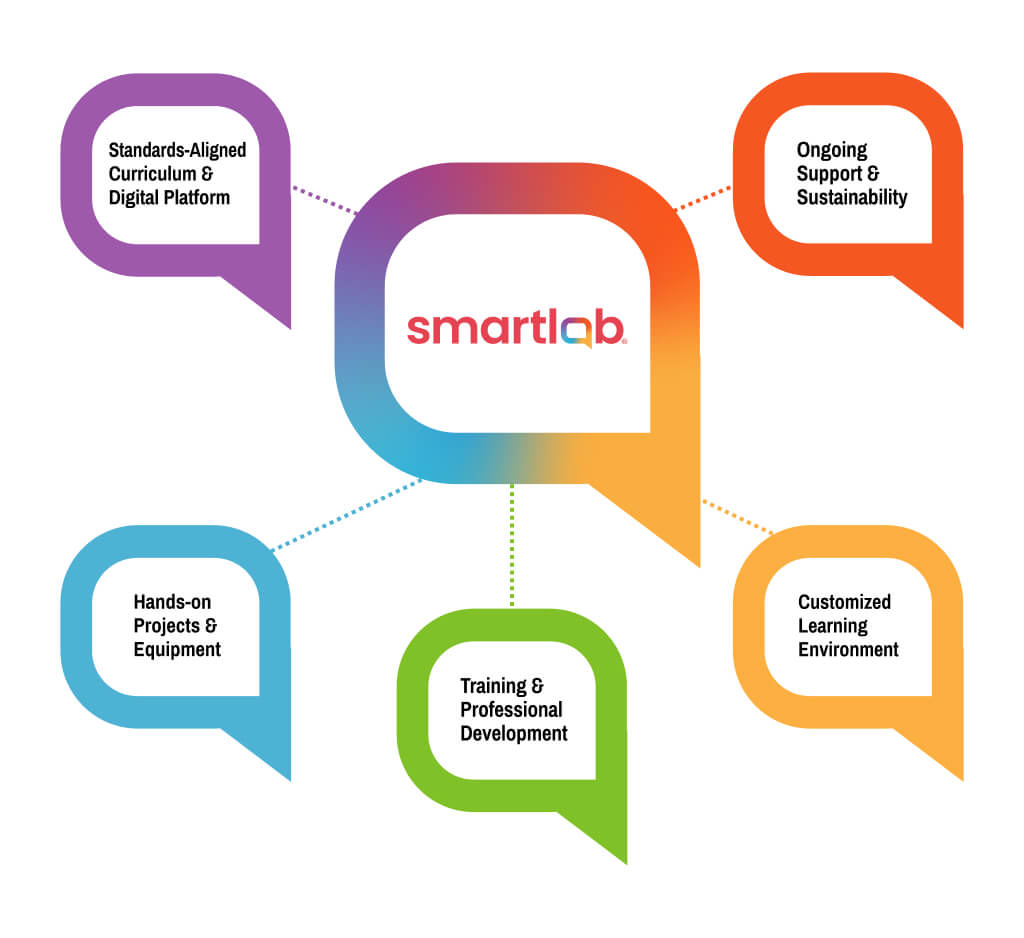
3. Be intentional with your technology and equipment — You should not include technology in a STEM lab for its own sake. Technology should always be in support of learning outcomes. You should implement age-appropriate technology tools for each grade level — it’s not realistic for a K–5 STEM lab to have the same equipment as a high school STEM lab.
When accessing new tools or equipment, be sure to consider how they will fit into your future STEM lab plans. Questions to answer include:
- Does the school have IT staff and tech support to maintain and fix equipment?
- How will the technology support and be incorporated into the curriculum?
- Will the instructors need training on how to manage or operate equipment?
- Can equipment be used across different age groups or courses?
4. Be intentional with the design of the lab space — The STEM lab layout should be open to encourage collaboration and provide learners with easy access to resources and equipment. Here’s two examples of SmartLab layouts for different spaces:
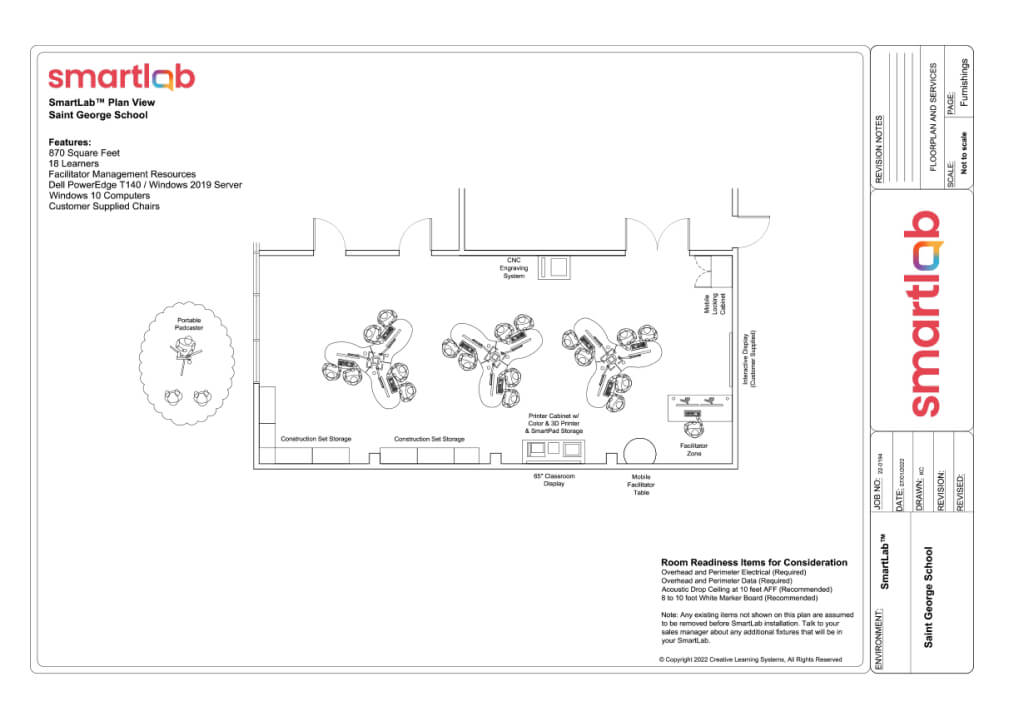
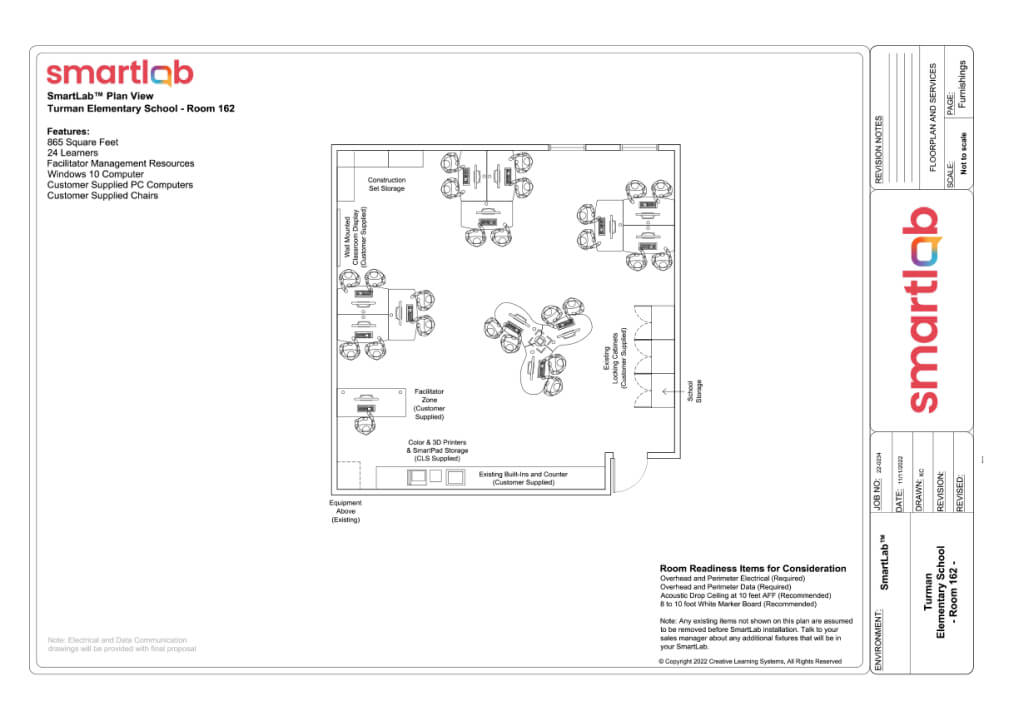
Both examples have paired work spaces to encourage collaboration, their storage areas and equipment are easily accessible, and there’s lots of open space to allow learners to walk around the lab. Here are some other considerations for your STEM lab environment:
- If the space is for a range of grades, use tables and chairs with adjustable heights.
- Ensure instructional surfaces such as white boards or video whiteboards are visible to all areas.
- Provide enough storage cabinets to support all materials and resources.
- Make sure all safety equipment is clearly marked and accessible.
For more examples of STEM lab layouts and considerations, see our Customized Learning Environment page.
5. Define your areas of STEM exploration and how they connect to real life skills — There are a breadth of topics that can be covered in a STEM lab, each of which could apply to the fields of science, technology, engineering, mathematics, or supplementary areas such as arts or communication.
Each topic area should have a direct connection to real-world issues or to potential careers. This example chart shows the eight different Areas of Exploration that SmartLabs are designed to cover.
No matter which content areas your STEM lab curriculum covers, learners should have access to real-life tools and technology appropriate to each STEM area, including:
- A variety of pre-professional computing devices and software, such as Photoshop, Excel, PowerPoint, or other common business programs
- Manufacturing technology and programs, which can range from simple maker kits to more advanced 3D printers and laser engravers
- Scientific measurement tools such as timers, rulers, voltmeters, thermometers, and weight scales
- Access to communication technology, including audio/visual technology and internet access
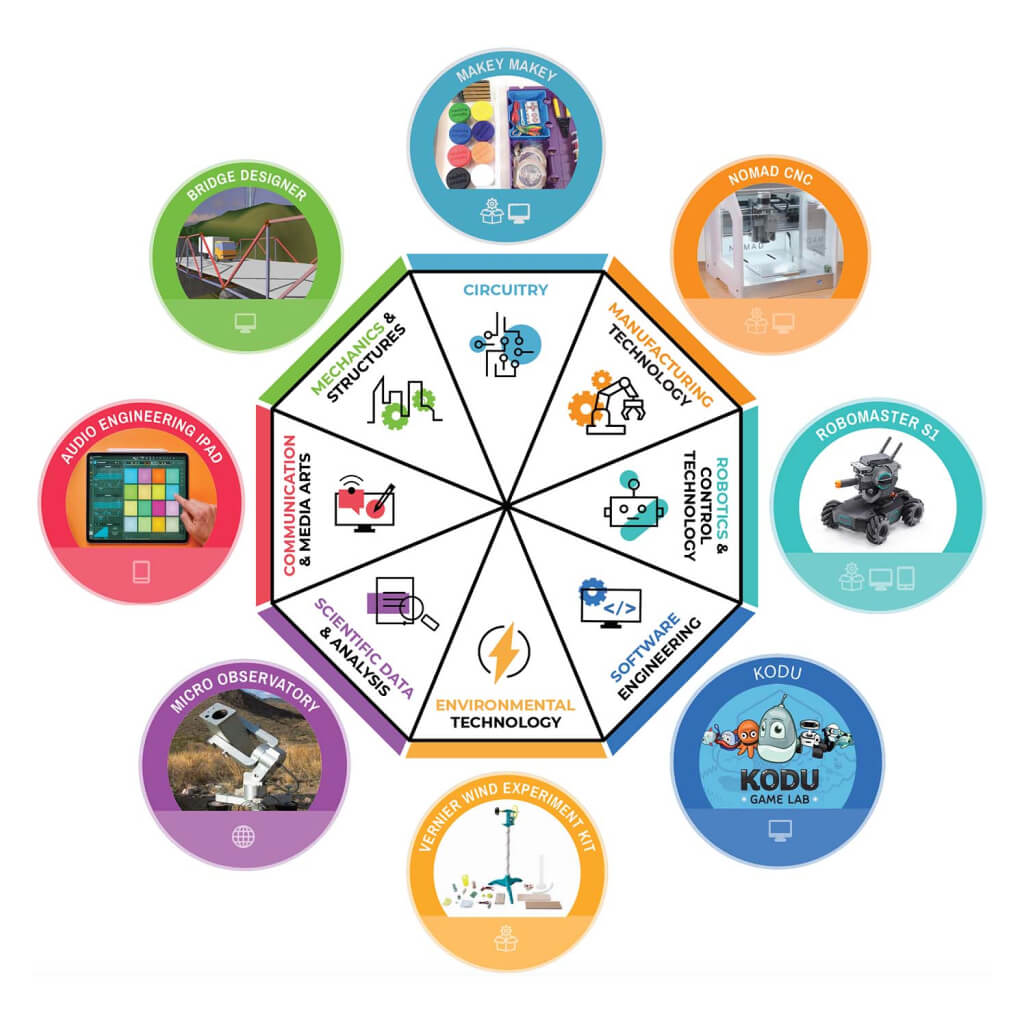
The more that learners have access to pre-professional tools, the easier it will be for them to transition to actual professional-grade tools they’ll use throughout their careers.
Benefits of STEM labs
Aside from providing a space for STEM programs, STEM labs offer essential benefits for learners that can enrich the entire academic program.
1. STEM labs provide equitable access to STEM learning
STEM labs provide a space where learners have personalized access to resources and opportunities to meet their unique circumstances. Students are empowered to take creative and intellectual risks and have the opportunity to experience failure as a moment of learning. When all students have access to high-quality, personalized STEM learning — no matter their race, gender, income level, or ability — more opportunities are open to them after their K–12 education.
Some tips to ensure that learners’ individual needs are met:
- Provide all learners with the opportunity to build familiarity with the environment and equipment.
- Ensure the classroom environment supports collaboration and peer-to-peer learning.
- All students should have the space to explain their projects, including what they find challenging.
2. STEM labs promote essential life skills including college- and career-readiness
Science and math concepts are core elements of every STEM lab, but they also offer a space for learners to develop other practical skills in pursuit of their own goals. Student-led learning provides ample opportunities for learners to become collaborators, ask compelling questions, communicate their thoughts clearly, and creatively solve problems. Developing these habits will enable them to thrive in their careers and as citizens by establishing important skills including:
- Critical thinking and problem-solving skills
- Active learning skills that drive innovation and creativity
- Self-empowerment life skills such as resilience and adaptability
- Direct experience with real-world technology and job-related skills
3. STEM labs allow for authentic student engagement
The more that students are able to see the relevance of what they’re learning and how it relates to their own lives, the more they are likely to engage with the material. STEM labs offer an environment where students are given the space to explore different concepts, issues, problems and relationships that can relate to their own interests or community. The use of digital platforms in STEM education can also support more personalized approaches to student-directed learning.
Differentiated and personalized instruction not only has positive benefits for engagement, but engaged students also have better classroom performance, more consistent attendance, and higher graduation rates. There are other benefits that STEM labs can provide, such as support for social emotional learning and accelerated learning programs. If you want to know more, see our overview of different SmartLab benefits and how they relate to student engagement.
Examples of STEM lab success
Having worked with school districts across the country, we have many different examples of successfully incorporating STEM labs into existing programs. Here are a few highlights of how our SmartLabs have brought the benefits of STEM labs to different schools.
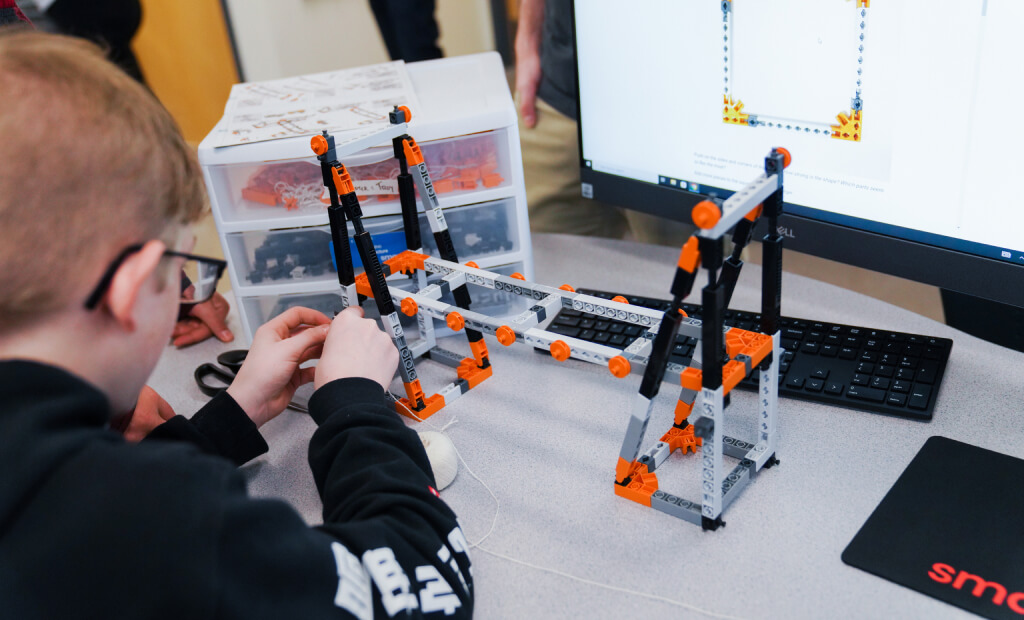
North Dakota Center for Distance Education
Providing sustainable STEM labs for even the most remote locations
More than two-thirds of Americans who lack access to the internet live in rural communities. This is a major hurdle for students in large states such as North Dakota, where 40% of students attend public schools in rural areas.
With limited available resources, many school districts rely on state agencies, such as The North Dakota Center for Distance Education (NDCDE), to provide online learning opportunities that can respond to student learning needs. By partnering with SmartLab, the NDCDE was able to install STEM labs in and provide curriculum, training, and technical support for multiple districts at an affordable cost.
The best part of this collaboration is that these initiatives are designed to be sustainable. All of the installed SmartLabs are designed to grow with the school and adapt as technology changes. Schools and instructors have access to the resources to continually work with students of all abilities on their problem-solving skills, critical thinking, collaboration, and creativity.
Read more about the North Dakota Center for Distance Education SmartLabs
Denver Academy
Self-guided learning includes organization and personal responsibility
Students at the Denver Academy learn much more than just what they’re assigned — students are so engaged with their work they often learn and apply additional related skills as they work on their projects. Students who traditionally struggled with reading get so inspired about what they’re building, designing, and creating that they are driven to read more about it. In the process, they’re also improving their writing, spelling, and typing skills.
As the students work on a wide variety of projects, the instructors set clear expectations on how they should handle the lab’s tools and materials. As a result, students are motivated to keep their tools and materials organized and intact so they can continue their work the next day, which is an opportunity for them to learn about personal responsibility.
Read more about the Denver Academy SmartLab
St. Paul’s Higher Ground Academy
A cooperative layout and peer guidance promotes collaboration
For low-income populations, the addition of a STEM lab can provide important opportunities. St. Paul’s Higher Ground Academy is one school that takes a STEAM approach by adding digital presentation and design to a tactile and kinesthetic learning environment. Organized by grade level, all students have the opportunity to spend an hour per day in the STEAM lab for two weeks, returning after two months, once the other grade levels have had a chance to cycle through.
In the SmartLab, each of the five computer stations offer collaborative, hands-on education guided by a digital platform. The stations are designed so that students work in pairs to read the instructions associated with their learning module and then work on their projects. The lab has a “three before me” rule, where if a group is stuck, they’re expected to turn to the pairs of students at two neighboring terminals before asking the facilitator for guidance, opening up further opportunities for communication and collaboration.
Read more about the Higher Ground SmartLab
Jewell Houston Academy
Providing personalized learning opportunities for student engagement
Jewell Houston Academy wanted a STEM program that would not only prepare students for STEM careers but could also teach conflict-resolution, problem-solving, collaboration, and communication skills. Due to the nature of the projects within the SmartLab, students learn to be problem-solvers while boosting their communication skills, which in turn helps them learn how to resolve conflicts.
Sometimes it’s just the matter of pairing up a student with the right project and approach. One student with a history of severe behavioral issues ended up at the Mechanics and Structures station in the SmartLab. Provided with some K’NEX and the instruction manual, the student was engaged enough with the project to complete it. Since then, she has become the top programmer and even taught other students how to use tools such as Digital Sandbox.
Read more about the Jewell Austen Academy SmartLab
FAQs
What is STEM?
STEM is an interdisciplinary approach to the instruction of science, technology, engineering, and mathematics. STEM education focuses on preparing students for future careers and 21st-century life skills by emphasizing critical thinking, problem-solving, creativity, and innovation.
What should a STEM lab have?
All STEM labs should have a well-designed learning environment, intentionally designed curriculum, and carefully chosen resources that support student-led learning activities. STEM labs should also have resources to facilitate professional development for instructors and to ensure the sustainability of the STEM program.
Is a STEM lab the same as a makerspace?
In our opinion, no. Makerspaces tend to be free-for-all; it is typically left to the teachers to determine how to use them. STEM labs are more intentional in their use and tend to have more protected time in the school schedule. STEM labs also are supported by an extensive curriculum, as opposed to the one-off projects that are more typical of makerspaces.
What is the difference between a STEM lab and a STEAM lab?
A STEAM lab will incorporate elements of the arts, which can range from fine art and performance art to photography and English literature, into the interdisciplinary structure of the program. A STEM lab will focus primarily on science, technology, engineering, and mathematics topics.
How do you set up a STEM lab?
The best way to set up a STEM lab is to start with the end in mind — ask what learning goals you hope the STEM lab will achieve and how learners will use the space. From there, determine how you want to structure the environment, how you’ll incorporate the curriculum, and what tools and resources you’ll need. Be intentional about your use of resources and space design and ensure they support student learning and collaboration.
I have a STEM lab, now what happens?
STEM labs need support over time to evolve with technology, to adapt to school requirements, and to adjust to student learning needs. Having a long-term plan for instructor training, equipment support, and curriculum development is essential.
Establishing and maintaining a STEM lab requires a lot of careful thought and planning. If you’re interested in establishing a STEM lab space in your institution, contact us to talk to our team or make an appointment to visit one of our SmartLabs. We can walk you through any questions you may have about a STEM lab.



